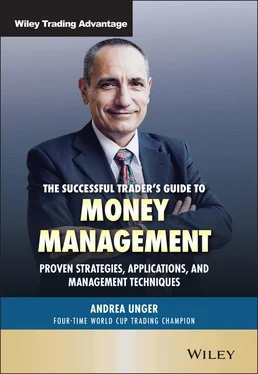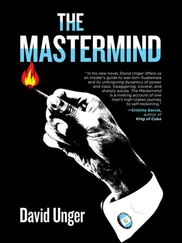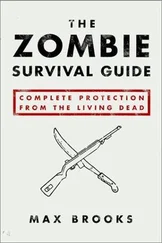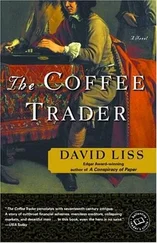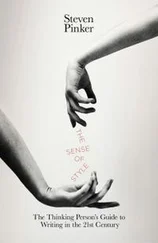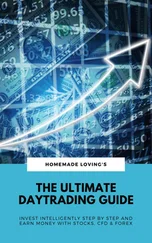A small number of speculators managed to adapt to the new market, people who'd been trading before the bubble, who'd already survived various ups and downs; and those who managed to turn what had once been a reckless gambler into a professional trader. These survivors, in turn, had an effect on other survivors, leading some to take the same route, revising their trading methods, and encouraging others to try and learn more about the specific sector in order to trade safely and emulate those who'd made their name in trading.
Gradually, more channels were created through which you could obtain trading information, courses were organised, conferences held, and books written promoting a variety of trading techniques.
The motto ‘Cut your losses and let your profits run’ is on everyone's lips, as is ‘First, don't lose too much’. Scalping is the technique favoured by the masses, as all you need is a fast and reliable trading platform, and a marked propensity for interpreting short‐term market movements. But many traders, born scalpers, gradually move away from this type of trading to try a less frenetic but perhaps also less enticing approach, and this is where trading systems came in, selling trading signals and courses to construct the same systems.
Those who follow me know I trade almost exclusively with automatic systems, as this is the approach that's best suited to planning your trading in detail.
The year 2008 was bad for the masses, and in time there were other sporadic events – such as the flash crash, the Fukushima meltdown, and the crisis of August 2015, which created more than a few obstacles to those who make a living or are just trying to survive on the stock exchange.
The trading industry opened its doors to the masses, trying to convince people all they needed was just a little time and money to obtain truly unbelievable results. At first the Forex market was promoted, emphasising the notable leverage that could be used, then there was a short‐lived attempt to promote trading with options, which paved the way for CFDs, once again emphasising the concept that with little, you could make a lot. Then came binary options, which didn't actually have a lot to do with trading but still promised a road paved with gold, and last but not least cryptocurrencies, which in a way marked the end for binary options, but we're already waiting for the next fad, all riding the wave of greed.
When one mentions money management, though, these words can be interpreted ambiguously and cause confusion. Most people see money management as the rigorous application of a stop‐loss, and a set of rules that produce risk/reward rations close to one‐third. One classic example of this is a system that aims to make a profit three times the system stop, which is often considered a system with a good approach to money management. Nothing could be further from the truth!
Everything that concerns position management should be considered part of risk management, while money management is used to study what would be the best choice in terms of the percentage of the capital to use for a trade. Explained in such simple terms, it seems quite a banal thing a trader might not consider that important. My hope is to convince you, in the following pages, that this is not the case.
When I got my hands on my first futures' trading system report, it was clear that the monthly profit (or annual profit, depending on how you want to consider it) produced by the single contract analyses wasn't enough to live on or justify abandoning everything else to dedicate my time exclusively to that system. The first thing I thought was: What sort of profits could I make if I used more contracts instead of just one, and in relation to the results, with the same number of contracts, what would change during the negative period of the system in terms of drawdown? If a system made a profit of €10,000/year with one contract, it would certainly be interesting to consider using five contracts to make (or it might be better to say, try to make) €50,000; but the same system could have a maximum drawdown of €2,500, which with five contracts would become a loss of €12,500 at a certain time of the year, and it's therefore important to ask yourself if you could withstand such a loss and continue to follow the signals of the system without qualms.
So, calculating the number of contracts to use becomes much more important than one might think, and is even more so when you see the effect a correct approach to making this choice can have on the results.
Personally, I interpret money management only in terms of the science that tells me ‘how much’ to use and not how to do so. Some prefer to call this simply ‘position sizing’ and include risk management also as part of money management, but in my opinion this is a somewhat strained interpretation that does no damage, apart from causing a few misunderstandings.
Everything you'll find in this book can be used to get the best out of the trading system or technique you've decided is best suited to your needs, in order to maximize profits. It won't turn a losing trading system into a winning one, because the basic concept on which the trades are made must be laid on solid foundations.
Конец ознакомительного фрагмента.
Текст предоставлен ООО «ЛитРес».
Прочитайте эту книгу целиком, купив полную легальную версию на ЛитРес.
Безопасно оплатить книгу можно банковской картой Visa, MasterCard, Maestro, со счета мобильного телефона, с платежного терминала, в салоне МТС или Связной, через PayPal, WebMoney, Яндекс.Деньги, QIWI Кошелек, бонусными картами или другим удобным Вам способом.
